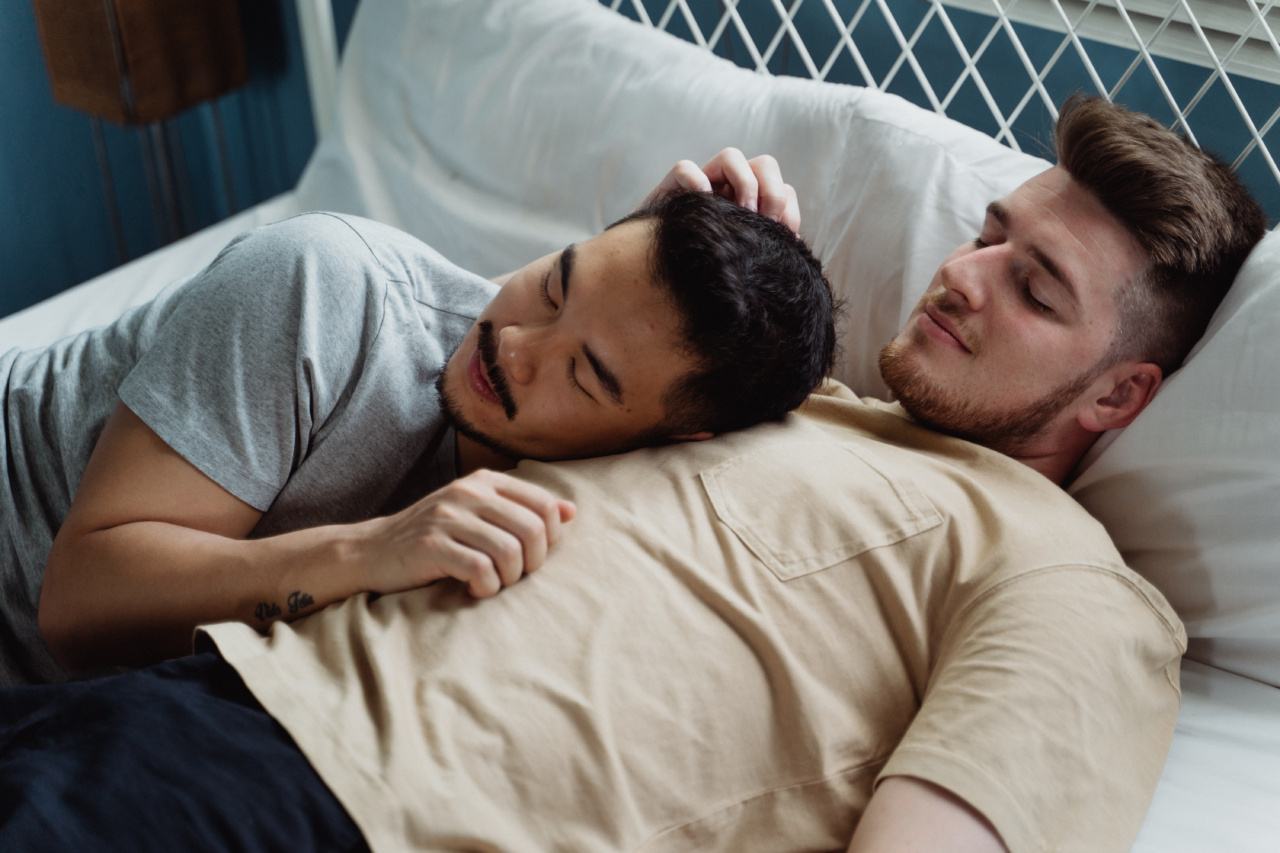For many couples, sharing a bed is considered a symbol of intimacy and togetherness. However, recent research suggests that there may be benefits to reevaluating this traditional practice.
While sleeping together can have its benefits, it is important to recognize that it may not always lead to a restful and rejuvenating night’s sleep. In this article, we will explore the various reasons why it may be time to rethink sharing a bed with your partner.
1. Sleep Disruptions
One of the primary reasons to reconsider sharing a bed is the potential for sleep disruptions. Each individual has unique sleep patterns, preferences, and habits.
These differences can clash when two people share a bed, leading to disturbances in sleep quality. Bed partners may have different sleep schedules, tossing and turning habits, or even varying temperature preferences.
These discrepancies can result in increased awakenings throughout the night, ultimately compromising the quality of sleep for both individuals.
2. Different Sleep Needs
Notwithstanding sleep disruptions, it is essential to recognize that individuals have different sleep needs in terms of duration and quality.
Some people may require more or less sleep than their partners, and their sleep quality might be affected by factors unrelated to their bed partner. For instance, certain medical conditions, sleep disorders, or external stimuli can significantly impact an individual’s sleep. Acknowledging and respecting these differences may allow for a more personalized and beneficial sleep routine.
3. Personal Space and Independence
A bed is a confined space, and sharing it limits personal space and independence. Each person may have their own sleeping positions, need for movement during the night, or even preferences for bedding and pillows.
Sharing a bed can restrict these individual needs and may lead to compromised comfort and overall satisfaction during sleep. Having separate sleeping spaces can provide individuals with the freedom to customize their sleep environment to their liking, resulting in better sleep quality.
4. Restlessness and Sleep Disorders
Restlessness during sleep, including frequent movements, snoring, or the presence of a sleep disorder, can significantly impact the quality of sleep for both bed partners.
Bed sharing amplifies the effects of these sleep disturbances and can lead to frustration, irritability, and even resentments between partners. Recognizing and addressing sleep-related issues with the help of medical professionals can contribute to better sleep health and improve overall relationship satisfaction.
5. Temperature and Climate Control
One of the most common sources of disagreement between bed partners is temperature and climate control during sleep. Some individuals may prefer a warm sleeping environment, while others might opt for cooler conditions.
These opposing preferences can make it challenging to maintain a comfortable temperature that satisfies both individuals. Adjusting the thermostat to meet the needs of two people with different temperature preferences can result in discomfort and disrupted sleep.
Having separate sleeping spaces allows each person to set the temperature according to their desired conditions, leading to better sleep quality.
6. Sleep Privacy and Intimacy
Contrary to popular belief, sharing a bed does not necessarily generate a higher level of intimacy or emotional connection. In fact, for some individuals, having separate sleeping spaces might even enhance intimacy.
Sleeping apart can promote a sense of privacy, autonomy, and personal freedom, which can translate into improved relationship dynamics. Establishing boundaries and exploring alternative methods of intimacy can lead to a healthier and more fulfilling relationship outside of the bedroom while still nurturing emotional connection and closeness.
7. Addressing Sleep Incompatibility
Sleep incompatibility refers to the discrepancies between individuals when it comes to sleep preferences and habits.
By recognizing and addressing these differences, couples can find creative solutions to enhance their sleep quality while maintaining a strong relationship. This might involve trying various sleeping arrangements, such as different bed sizes, separate beds in the same room, or even separate bedrooms.
Open communication and a willingness to experiment with different approaches are essential when tackling sleep incompatibility.
8. Enhanced Sleep Hygiene
Sleep hygiene refers to a set of practices and habits that promote good sleep quality. Sharing a bed can sometimes hinder the ability to maintain optimal sleep hygiene.
For example, if one person has a habit of staying up late to read or watch TV while the other prefers to sleep early, it can lead to conflicting routines. Having separate sleeping spaces allows each person to follow their preferred sleep hygiene practices without disturbing the other. This promotes individual sleep wellness and can positively impact overall well-being.
9. Improved Sleep for Both Partners
While it may seem counterintuitive, sleeping separately can actually lead to improved sleep for both partners. Getting a good night’s sleep is crucial for overall health, mood, and productivity.
By prioritizing individual sleep needs, each partner can experience improved sleep quality, leading to increased energy, mental clarity, and overall satisfaction. When both individuals are well-rested, they can then foster a stronger and more positive dynamic in their relationship.
10. Rejuvenating the Relationship
Rethinking bed sharing can serve as an opportunity to rejuvenate and enhance the overall relationship.
By exploring alternative sleeping arrangements that suit each partner’s needs, it demonstrates a willingness to prioritize the well-being and happiness of both individuals. This process can foster open communication, compromise, and an appreciation for each other’s uniqueness. Ultimately, this shared journey towards better sleep can deepen the emotional connection and strengthen the bond between partners.
Conclusion
While sharing a bed with your partner is deemed as the norm, it is crucial to recognize that it may not always contribute to a restful and rejuvenating night’s sleep.
Sleep disruptions, different sleep needs, conflicting preferences, and various sleep-related issues can compromise the quality of sleep for both individuals. However, reevaluating the practice of bed sharing presents an opportunity to enhance sleep quality, promote personal freedom, and foster a stronger relationship.
By embracing alternative sleeping arrangements, individuals can prioritize their sleep health while nurturing emotional intimacy and connection in their relationship.






























